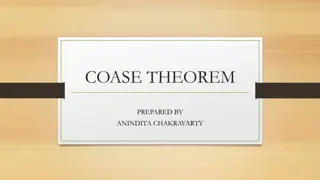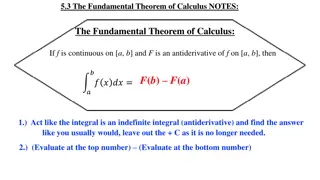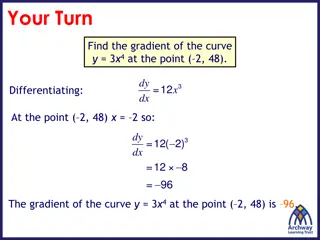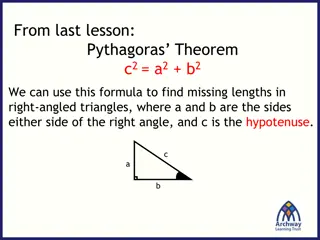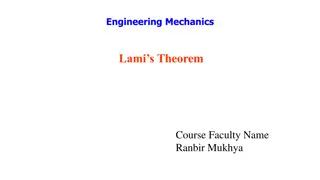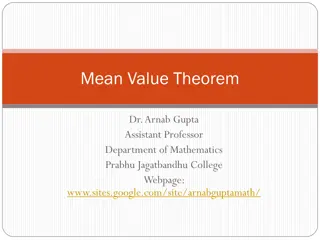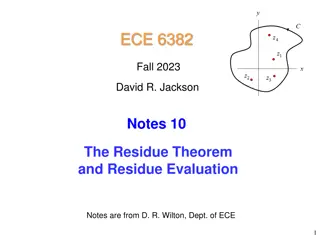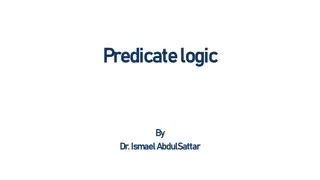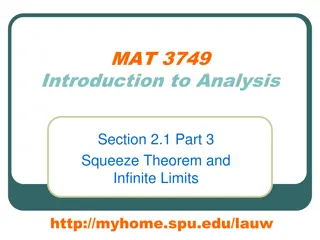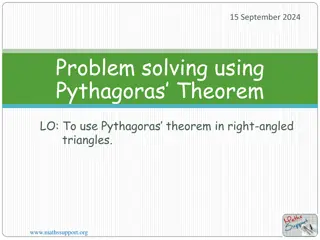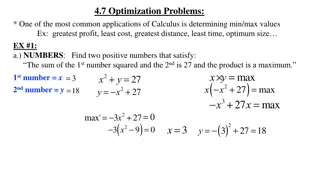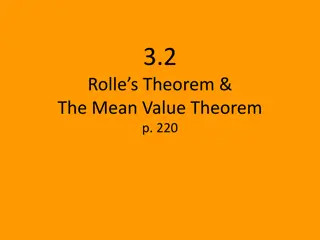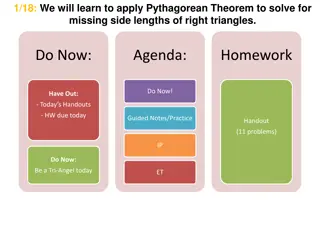Understanding Rolle's Mean Value Theorem in Calculus
Rolle's Mean Value Theorem states that if a function is continuous in a closed interval, differentiable in the open interval, and the function values at the endpoints of the interval are equal, then there exists at least one point where the derivative of the function is zero. This theorem is verified through examples and proofs, showcasing its significance in calculus.
Download Presentation

Please find below an Image/Link to download the presentation.
The content on the website is provided AS IS for your information and personal use only. It may not be sold, licensed, or shared on other websites without obtaining consent from the author. Download presentation by click this link. If you encounter any issues during the download, it is possible that the publisher has removed the file from their server.
E N D
Presentation Transcript
Rolles Mean Value theorems B.Sc. I Year Mr. Shrimangale G.W.
Rolles mean value theorem Theorem :- If a function f is , 1) Continuous in a closed interval [a,b] 2) Derivable in the open interval (a,b) and 3) f(a) = f(b), then there exists at least one value c (a,b) such that f (c) = 0.
Proof :- By virtue of continuity of the function in the closed interval [a,b] it has a greatest value M and a least value m in the interval, so that there two numbers c and d such that f(c) = M and f(d) = m Now either M = m ..(i) or M m ..(ii) When the greatest value coinsides with the least value as in case (i), the function reduces to a constant so that the derivative ia equal to 0 for every value of x and therefore the theorem is true in this case.
When M and m are unequal,as in case (ii),at least one of them must be different from the equal values f(a) and f(b).Let M=f(c) be different from them. The number c being different from a and b,lies within the interval [a,b] and as such belongs to the open interval (a,b),in particular , derivative at c, so that when h 0
exists and the same when h0 through positive value.Also f(c) is the greatest value of the function , we have f(c+h) f(c) whatever positive or negative value h has.Thus (iii) (iv)
Let h0 through positive value. From (iii),we get f (c) 0 .(v) Let h 0 through negative value. From (iv),we get f (c) 0 (vi) the relation (v) and (vi)will both true if and only if f (c) = 0. Thus the same conclusion would be similar reached if it is the least value which differ from f(a) and f(b). Hence the theorem.
Example-1 Ex. Verify the Rolle s theorem for Solution :- Here from the given function it is clear that f(1) = 1 = f(-1). The conditions of the theorem being satisfied, the derivative f (x) must vanish for at least one of x (-1,1). Directly we see that the derivative vanishes for x=0 which belongs to (-1,1).Hence the verification.
Example-2 Example :- Verify the Rolle s theorem for Solution :- Let So that f(-3) = 0 = f(0). Also the function is derivable in the interval [-3,3].we have Now f (x)=0
The equation is satisfied by x=-2,3.Of these two values of x for which f (x) is zero,-2 belongs to the open interval (-3,0) under consideration. Hence the verification.
Problems for home work :- Examples :- Verify the Rolle s theorem for the function: (i) (ii) (iii)




